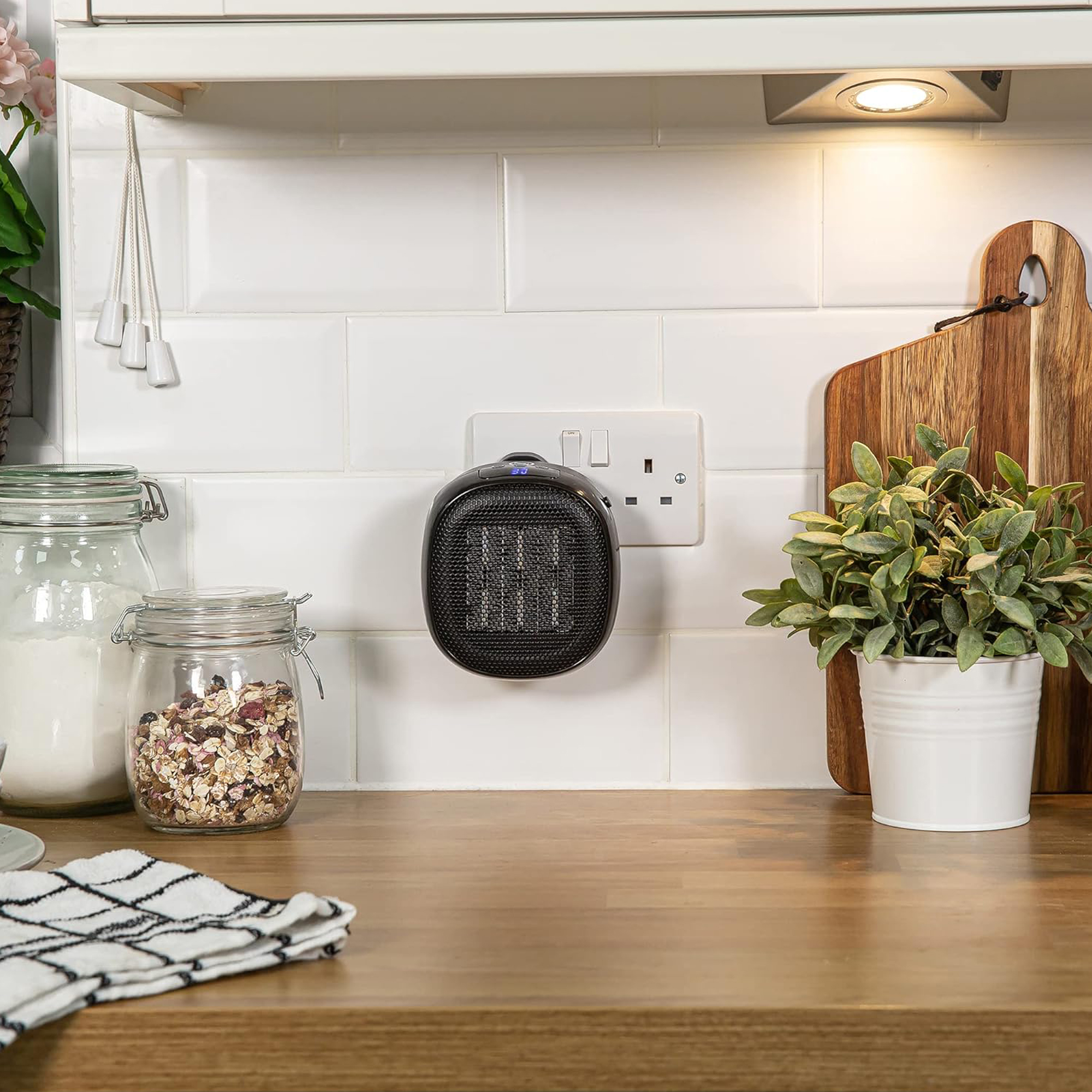
Now that winter is on the horizon, the ceramic heater vs fan heater debate is heating up - and it’s not hard to understand why. As two popular additions to the home, they can warm up even the coldest of days. That’s why we’ve consulted with experts to find out which electric heater will help you beat the chill without breaking the bank.
Even though we’ve had the pleasure of testing the best electric heaters on the market, we still know that choosing the right option for your home can be a minefield. Most claim to supply instant heat at an affordable price, allowing homeowners to fight back against rising energy price caps and keep their homes warm in winter. But with so many different makes and models out there, it’s incredibly easy to make an electric heater buying mistake.
To help you understand which one will work best for you and your home, we asked experts to discuss the two most popular types of electric heaters: ceramic heaters and fan heaters. And by the end of this guide, you should know exactly which one to choose.
Dubbed 'the best for small spaces' this ceramic heater was given an impressive 4-star rating during our review. Most importantly, it was celebrated for its affordable price tag and low energy usage.
This Beldray was crowned the 'best budget fan heater' in our guide, making it the perfect option for those who want to stay warm on a budget. Plus, our reviewer praised it for how easy it was to use.
What is a ceramic heater?

If you’re wondering which portable heater wins in the ceramic heater vs fan heater debate, it’s important to understand the difference between them. After all, they both heat rooms in very different ways.
In simple terms, a ceramic heater is designed to heat up a room using resistive heating - a process that involves passing an electric current through a conductive ceramic plate. However, as the current struggles to pass through the ceramic plate, the resistance created ultimately heats it up and allows that heat to be released into the air.
There are countless ceramic heaters on the market, from plug-in options like the Russell Hobbs 700W Ceramic Plug-In Heater we tested to this stylish Small Olive Square Heater from Dunelm that will heat your room and also add a pop of colour in the process.
What is a fan heater?
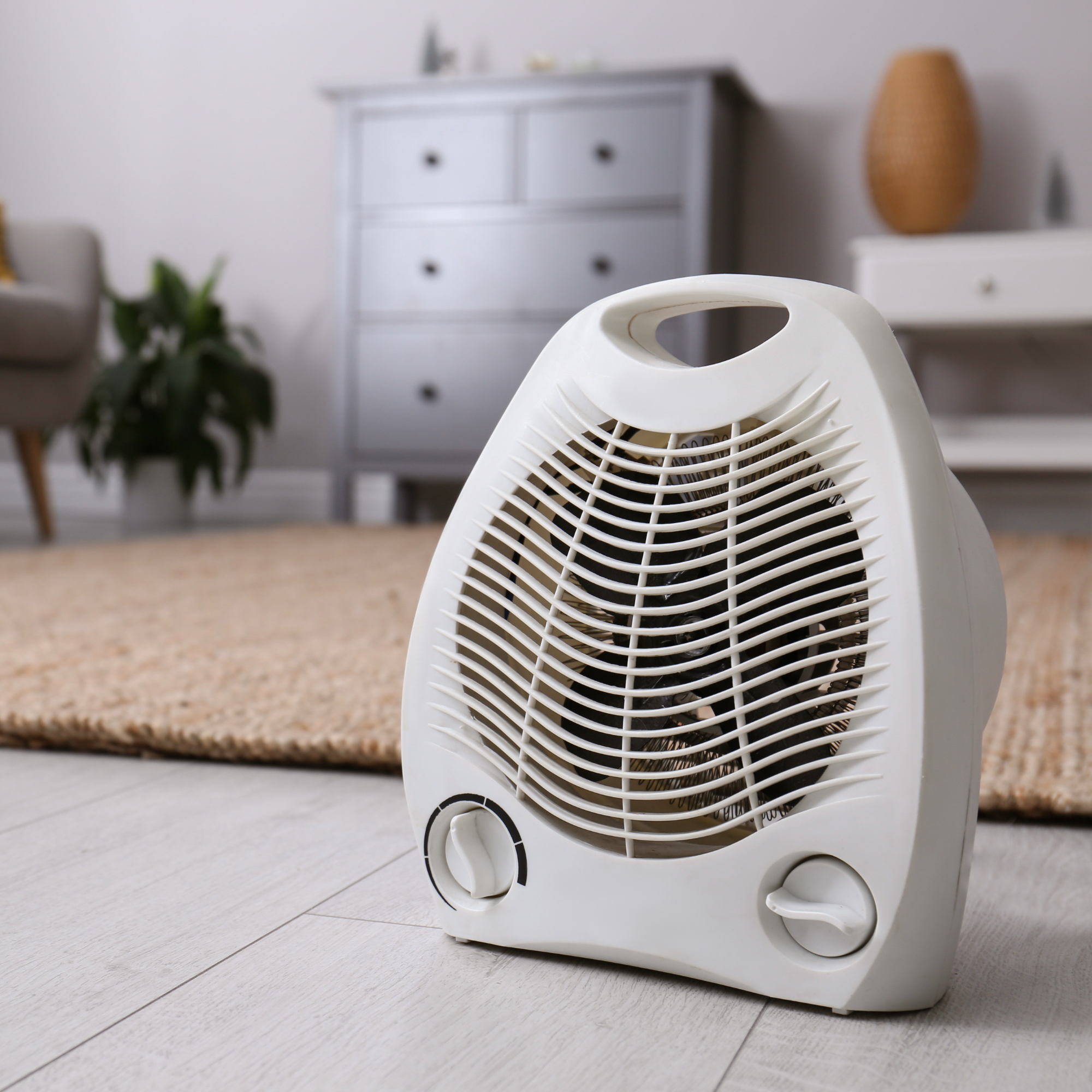
A fan heater will heat a room using different components and a different method. And as Isabella Forgione, fan heater expert at AO.com explains, ‘They work by utilising a built-in fan which blows air over a heating element and distributes warm air across a room. This makes them ideal if you’re after instant warmth as the cold sets in.’
Yes, a fan heater does what it says on the tin; it heats a room by passing air over a heat source and then pumping the hot air into the room like a fan. And they’re perhaps the most common type of electric heater you can buy today.
They’re also a popular choice for heating experts, and it’s the heater of choice for Nicholas Auckland, a heating expert at Trade Radiators. He says, ‘When it's really cold, sometimes the radiator in the room just isn't enough to heat the whole space, so fan heaters are ideal.’
But, of course, like all types of heaters, there are both perks and downsides to fan heaters. Because of this, it’s always best to weigh up your options - especially if you are torn between a ceramic heater vs fan heater.
Ceramic heater vs fan heater: Which produces more heat?
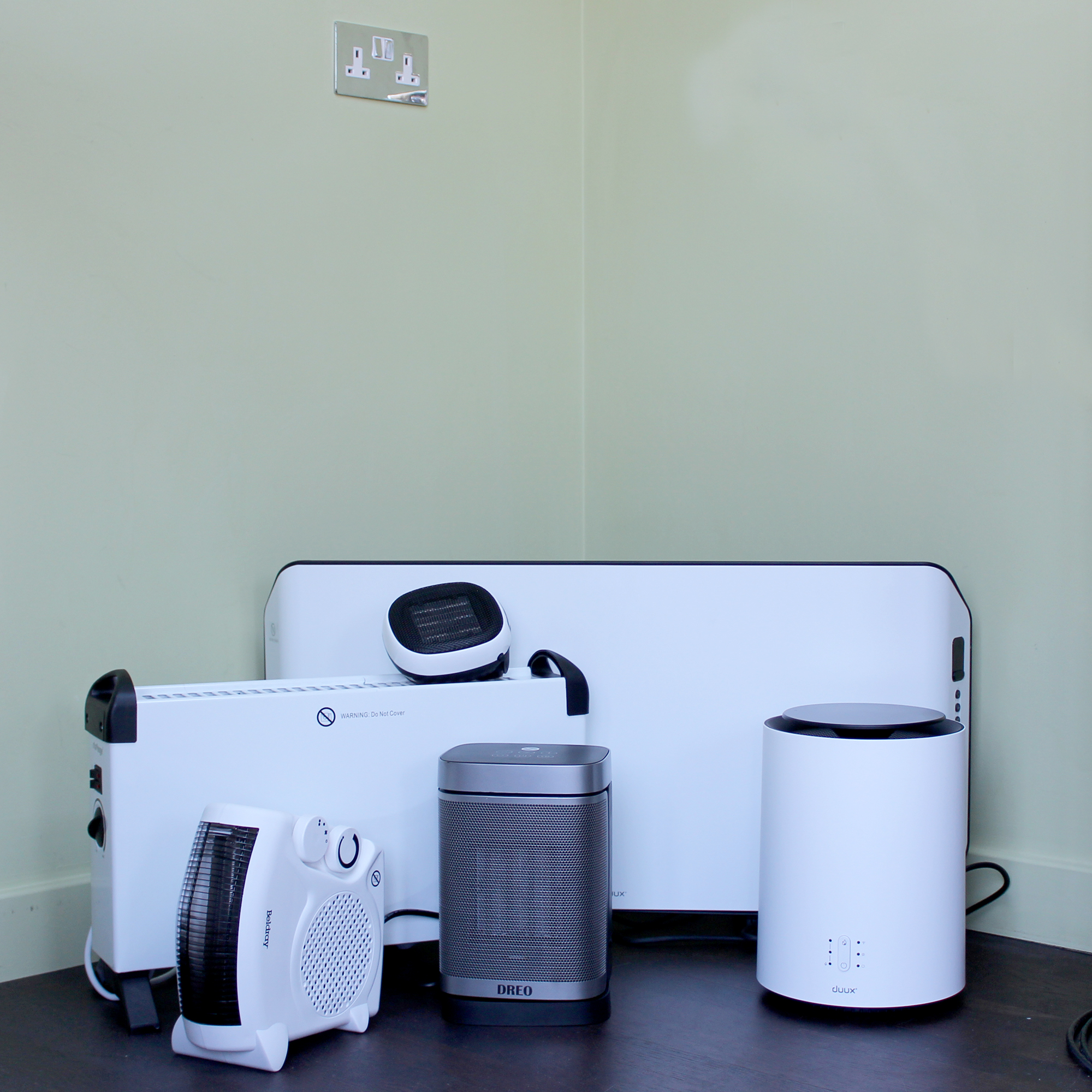
Although both ceramic and fan heaters will give you a break from the cold, they produce different kinds of heat and have their downsides, which may impact your decision.
In terms of ceramic heaters, Nicholas says, ‘Due to the speed at which they heat up, they are more effective at heating spaces quickly, but it can sometimes find it difficult to heat a room evenly for extended periods of time.’ However, they do retain their heat for a while after they’ve been turned off.
There are negatives to fan heaters, too. ‘Once they’re off, the space will cool down rapidly as there will no longer be hot air being blown through it,’ adds Nicholas.
At Ideal Home, we’ve had the pleasure of testing both ceramic heaters and fan heaters. Our expert tester, Rachel Ogden, put these heaters through their paces to test them on their heat output, overall performance, energy usage, size, and affordability.
When testing the Russell Hobbs 700W Ceramic Plug-In Heater, she was aware of the fact that it’s one of the smallest heaters on the market. And while she was expecting it to lack power, she was pleasantly surprised with the outcome.
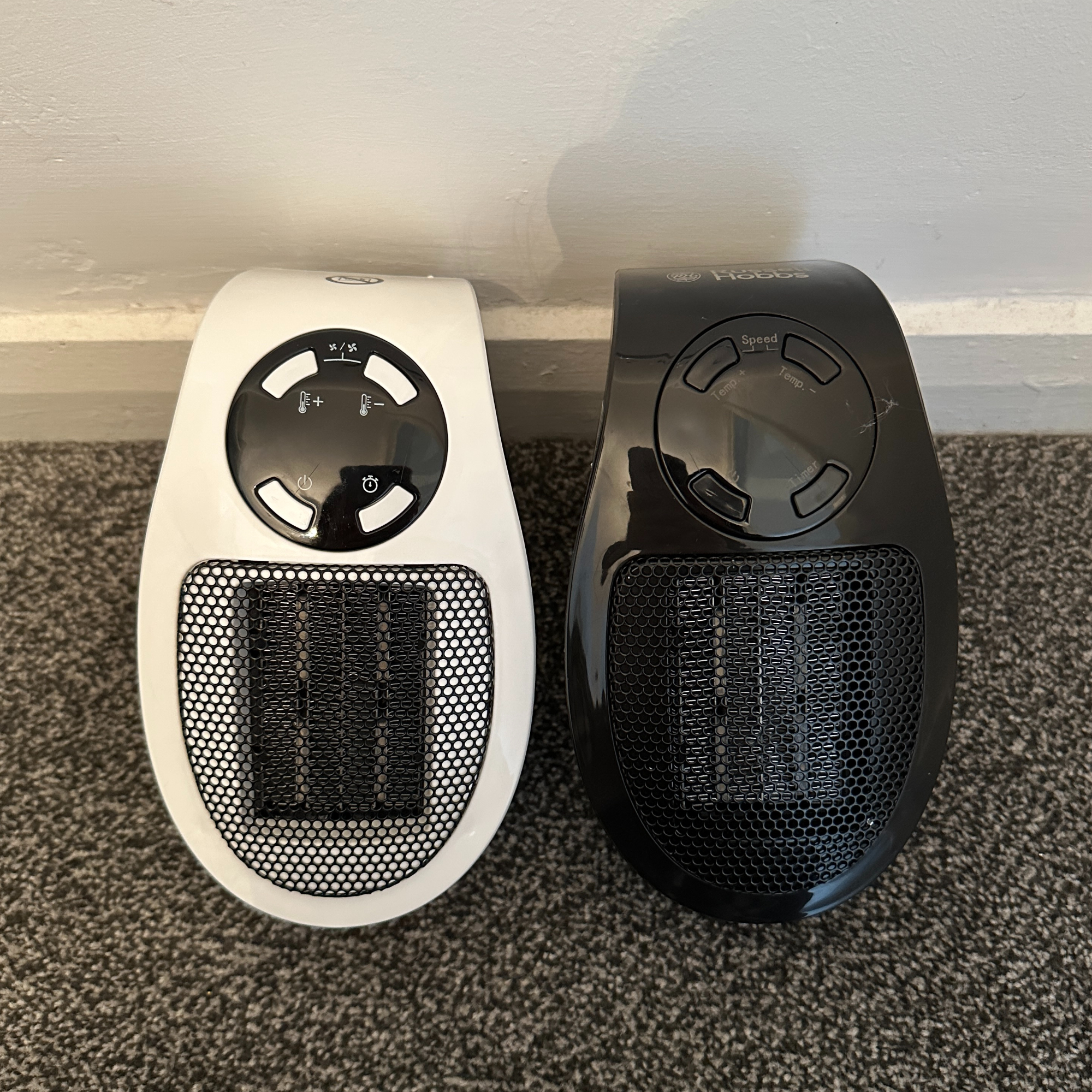
She said, ‘At first, I found the reach of the Russell Hobbs 700W Ceramic Plug-In Heater to be limited – I found I got about a three-metre range of direct heat after the heater had been running 10 minutes or so. However, when left running for about half an hour, the heat diffused around a metre further, warming the whole 15 sqm room after about 45 minutes.
‘This is no mean feat considering I was pushing the heater a bit beyond its capacity; it's designed to be used in a 10sqm area. In fact, considering this compact heater is far smaller and less powerful than all the other heaters I tested, I was really impressed by its performance.’
Rachel also tested a few different fan heaters, including the Beldray Flatbed Portable Fan Heater. In her review, she was impressed with the burst of heat that it was able to produce. And while she raved about its performance, there was a slight negative.
‘For its size, the EH0569SSTK fan is a hard worker. Even on its lowest setting, it supplies a good boost of heat instantly. However, that heat has a limited reach and took a while to diffuse around the whole room when tested. Close up, the Beldray is cosy, but it would probably be a costly way to heat a medium-to-large room from cold.’
Of course, both of these options would be perfect for heating small rooms. But if you’re looking for something that’s more hardcore and suitable for heating larger rooms, it might be better to opt for something like the Dreo Fan Space Heater, which Rachel dubbed the ‘best overall’ electric heater in terms of heat output.
Ceramic heater vs fan heater: Which takes up more space?
Space is also something you need to consider if you’re torn between buying a ceramic or a fan heater, as choosing the wrong size and ultimately placing it in the wrong place are two of the biggest electric heater mistakes you can make.
For the most part, fan heaters are generally much bigger than ceramic heaters to accommodate the internal fan components. In fact, this is the case with the Dyson Purifier Hot+Cool Formaldehyde HP09 Purifying Fan Heate, which comes in at H76 x W22 x D22cm.
And while this is fairly small compared to other Dyson fans and heaters on the market, it’s a large addition that you’d need to find space for in your home to ensure it works as efficiently as possible.
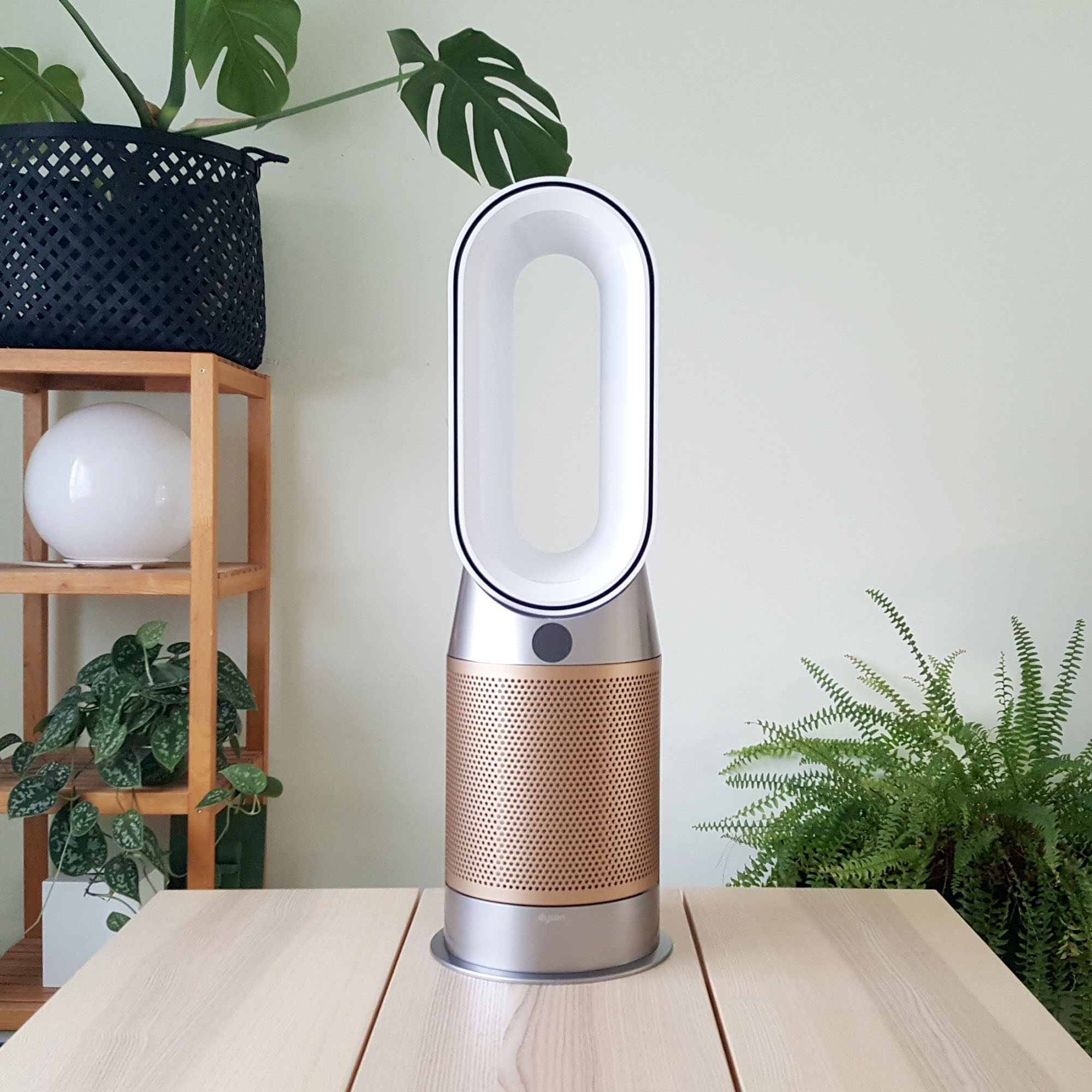
On the other hand, ceramic heaters are generally much smaller. This is something our reviewer, Jullia Joson, discovered when she tested the Dunelm 500W Plug in PTC Heater.
As the name suggests, this plug-in heater is so small it’s only a bit bigger than a normal plug top. This size suited her home office perfectly, as it can heat a room up to 10m² without getting in the way or taking up any limited floorspace. Of course, a smaller size does typically mean that it’ll take longer to heat up smaller rooms - which is why tailoring your electric heater choice to your home and your needs is so important.
However, both ceramic and fan heaters are still significantly smaller than convector heaters like the Duux Edge 1000 Smart Convector Heater, as they often look more like full-size radiators - which just isn’t suitable for smaller homes.
Ceramic heater vs fan heater: Which is quieter?
If you want to use a ceramic or fan heater at night while you sleep or in the middle of the day as you have meetings at home, the noise levels are also something you need to consider. After all, you don’t want a noisy heater keeping you up at night or interrupting your Zoom calls.
And when it comes to the ceramic heater vs fan heater debate, one is typically much quieter than the other. As Isabella explains, ‘Since fan heaters use a fan, this can be quite noisy.’
This was something found when testing the Duux Threesixty 2 Smart Fan Heater, and our tester grumbled that, ‘Its stated noise level is 56dB which is pretty high compared to many heaters I've tested.’
That’s not to say that all fan heaters are noisy, though. During testing, we found that the De’Longhi Capsule Fit was significantly quieter than the other fan heaters - and according to De’Longhi themselves, that’s because they’ve designed the heater to be 60% quieter than a standard fan heater at its lowest and medium settings.
In general, though, ceramic heaters win in the noise department.
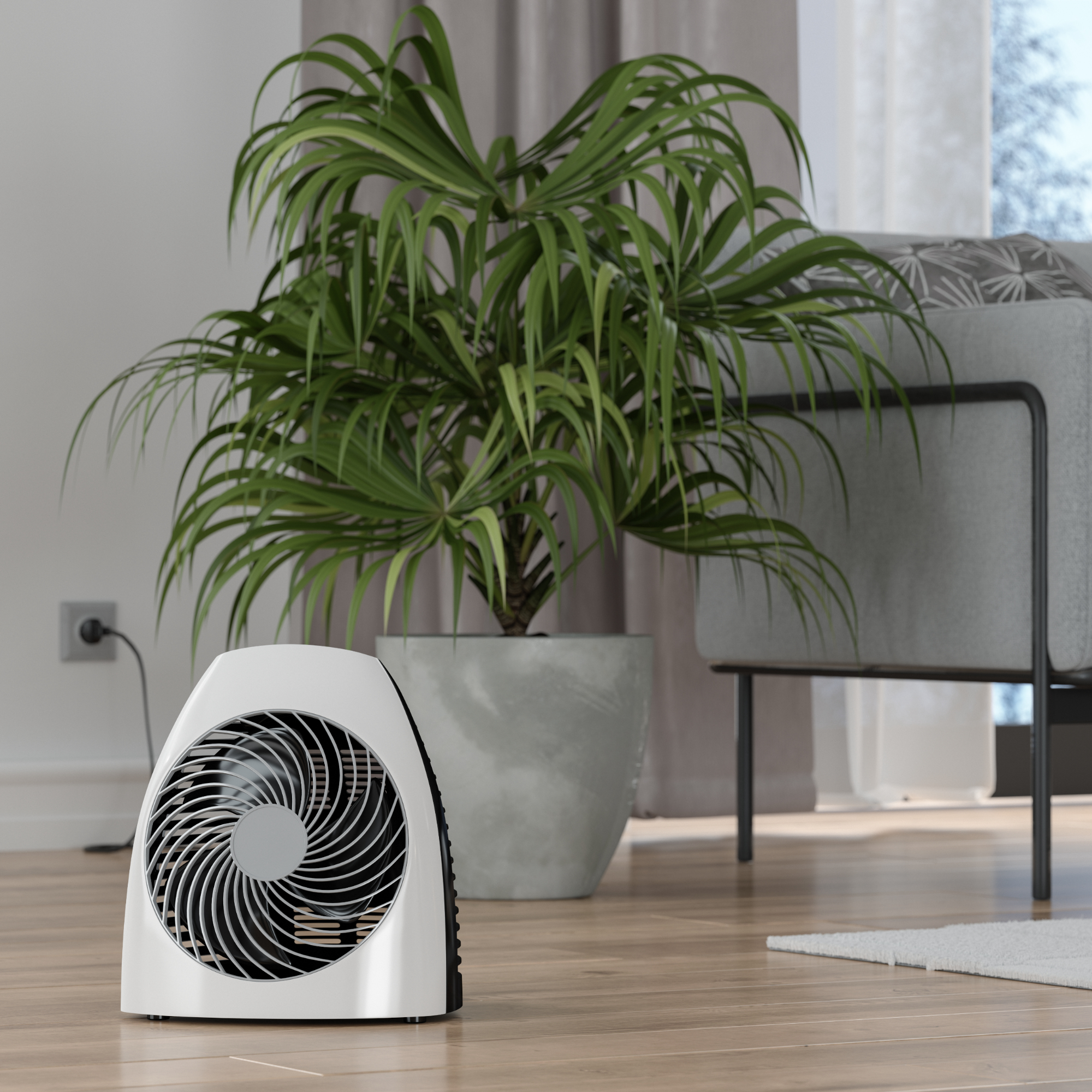
Ceramic heater vs fan heater: Which is safer?
In today’s modern age, electrical appliances are kitted out in all kinds of safety switches to ensure they’re as safe as possible in the home. However, it’s still important to consider the safety risks between these two heaters.
Giuseppe Capanna, Product Safety Engineer at Electrical Safety First says, ‘Different types of heaters come with different benefits – but also different risks. Fan heaters heat a coil that, in turn, warms up a room or items within that room with intense heat. Because of this intense heat, they can pose a higher fire risk if left too close to fabrics or if their vents are blocked.’
On ceramic heaters, Giuseppe adds, ‘Ceramic heater elements can be live mains voltage, so it’s imperative to ensure your heater meets safety standards to ensure you’re not exposed to electric shock. Stick to a reputable high-street retailer you know and trust.’
As well as considering the fire safety risk, you might also want to consider how these heaters will affect the people in your house - especially if someone in your family has allergies. ‘Electric fan heaters may cause issues for those who suffer from allergies, as they can distribute dust throughout the space they’re heating while blasting hot air through it’, says Nicholas.
Because of this, it’s generally considered that ceramic heaters are much safer than fan heaters.
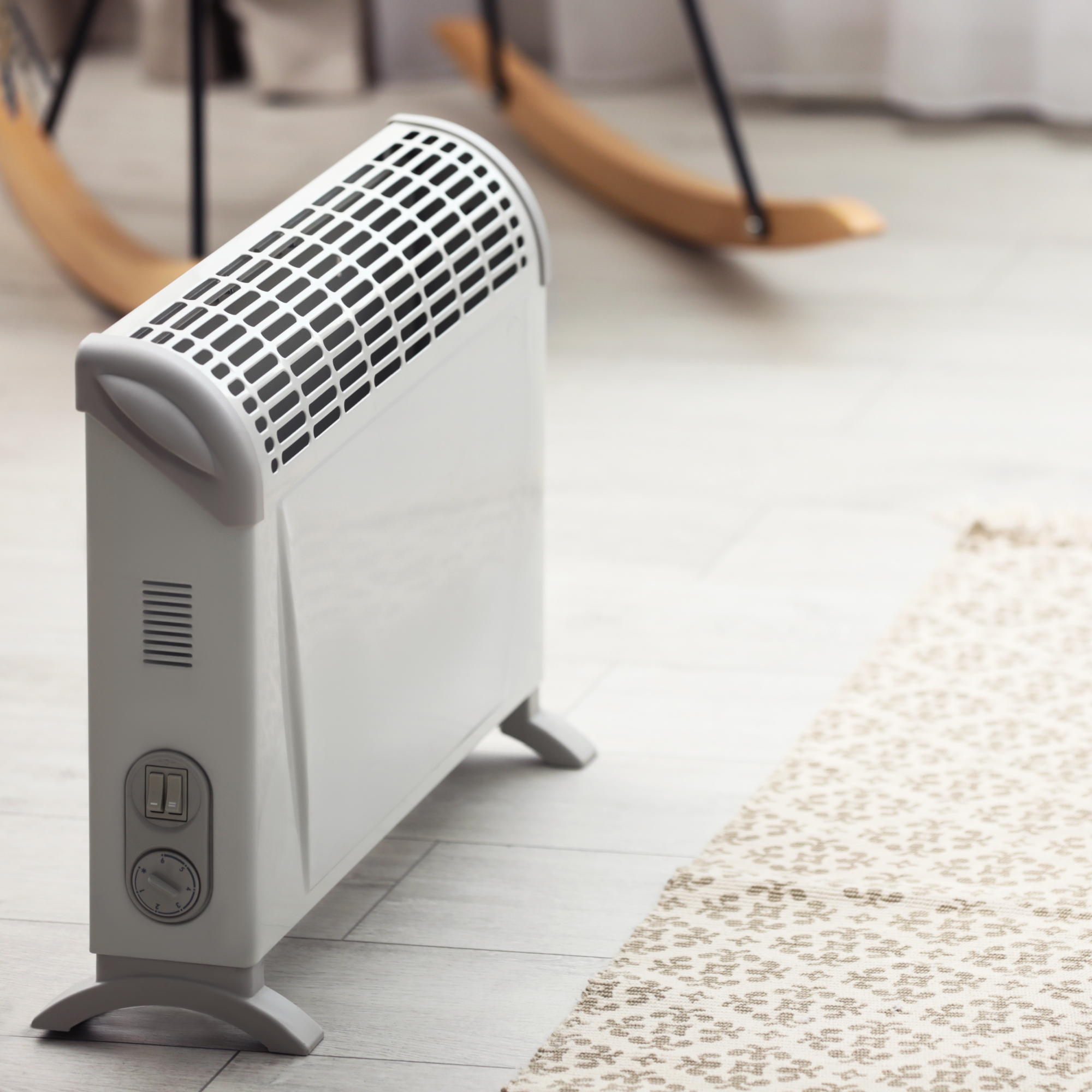
Ceramic heater vs fan heater: Which is more affordable?
When comparing the price of ceramic heaters and fan heaters, you need to look at two different prices: the prices of the appliance itself, and how much they cost to run.
In terms of the price of the appliance, both electric heaters are extremely affordable and fairly similar in terms of price - and you certainly won’t struggle to find a ceramic or fan heater under £50. In fact, you can find many electric heaters for under £20.
However, when it comes to which is the cheapest electric heater to run, our tests found that fan heaters were more costly to run than ceramic heaters. The Russell Hobbs ceramic heater cost just 19p an hour to run at its highest setting based on a rate of 27p per kWh, while the Beldray fan heater cost 54p per hour on the highest setting and 27p on the lowest setting.
This price difference is something Thomas echoes. He says, ‘Although they are small and portable, fan heaters use a lot of energy even in a relatively short period of time, making them very expensive to run.’
‘As well as being expensive to run, fan heaters are not very energy efficient. Unlike a ceramic heater, there is no heat retention benefit, even in the short term. As soon as the fan heater is turned off, it stops producing heat, and the room will cool down quite quickly.’
Final verdict: Which one do you need?
'We've all noticed the drastic drop in temperatures of late, so it’s time to reach for your heaters to keep home nice and cosy,' says a representative from Russell Hobbs.
However, the debate between ceramic heaters vs fan heaters is a tough one. They both have their positives and their negatives, and where one falls short, the other often thrives. Overall, Russell Hobbs concludes, 'As it is more energy efficient, a ceramic heater would be the perfect option for heating different sized areas.'
There is a way for us to answer this question without having to choose between the two, though.
That’s because there are many fan heaters on the market today that have a ceramic element rather than a metal element, which means that they offer the best of both worlds while combatting the negatives of both.
But it’s also worth mentioning that other electric heaters exist, too. It could be that a convection heater suits you best, or you might want to go outside of the box and opt for an infrared heater. Whatever you choose, you must first be confident that it’s the right option for you and your home.
The Dreo fan heater is quick to heat up a room, oscillates for good heat distribution, has three fan speed settings, and can maintain a temperature of between 5-35°C. It's also relatively affordable, compact, and easy to move around the home.
This fan heater is super stylish, offers 360° multidirectional heat, and has WiFi connectivity. It looks good and heats up a space fast, we just found it a little fiddly to operate, and a bit noisier than some of our other choices.
While we haven't tested this electric heater (yet), we're huge fans of the Pro Breeze brand - and the Pro Breeze dehumidifier has been a firm favourite of ours for years. This particular fan uses advanced ceramic heating elements to provide fast and more efficient heating and has very impressive reviews.
FAQs
What are the disadvantages of ceramic heaters?
One of the biggest disadvantages of a ceramic heater is that it can struggle to warm up a larger room, which means that it might not be suitable for those with a bigger house. Due to the way they heat up, they can also dry out a room, which could be an issue for those with asthma.
Another disadvantage of ceramic heaters is that it can often be hard to control the heat output. This means that you may struggle to find and maintain a temperature that suits your space, while potentially spending more money on electricity in the process.
What are the disadvantages of a fan heater?
Fan heaters will cool down extremely quickly after they’re turned off, which is perhaps the biggest disadvantage. As a result, you may have to turn it back on quicker to keep the room at a constant temperature.
Alongside this, fan heaters are generally noisier than other electric heaters on the market and can be a fire risk if you don’t take the relevant safety precautions when using them.
Now you’ve got the lowdown on the best type of electric heater to buy, you have all of the info you need to stay warm this winter.







